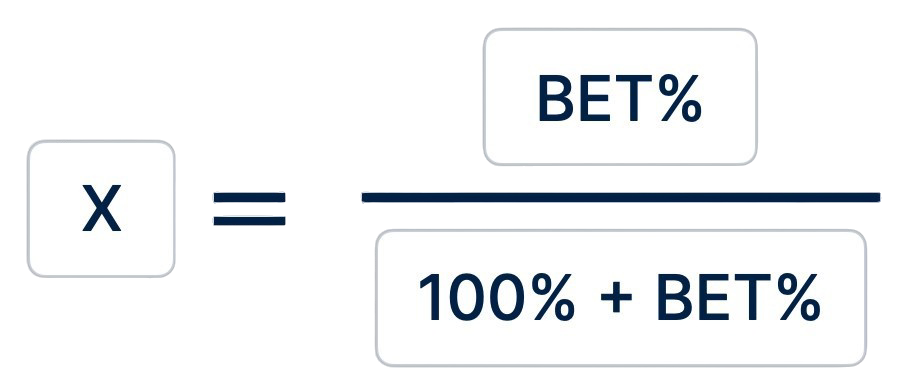Translated with the help of AI. We apologize for any errors and would appreciate your help in correcting them.
Fold equity – the probability that in response to a bet or raise the opponent will drop his hand. In other words, this is the part of the opponent's range in percentage terms that he will send to the fold in response to our action.
Bluff post-flop is the most difficult of all 4 types of post-flop games. A lot of players of low and middle limits understand it very intuitively and miss a huge number of profitable situations, not counting this type of post-flop game is quite important. In fact, it is this area of the game that can give a great edge over the field. For this reason, in my video course on the post-flop game, this type of post-flop game has as many as 4 sections.
1. Mathematics of bluff
When calculating, fold equity is expressed as a percentage from 0% to 100% or as a number from 0 to 1 (for example, 0.5). To assess the profitability of a bluff, several concepts are introduced. The break-even point is the value of the fold equity (X), at which the profit from the bet as a bluff is zero.
The value of X depends on the size of our bet and is determined by the formula:

For a bluff to be profitable, the probability of taking the pot with an aggressive action (fold equity, FE) must be higher than the value of X. In other words, your villain must fold more often than X.
Simplified bluff profitability formula

To reduce the effect of variance and level possible inaccuracies in the calculations, a minimum profit of 3-5% should be expected. For example, we want to make a bet of 35% of the pot.
Let's define the break-even point:

The break-even point is 26%. To make a profit at a rate of 35% of the pot, we need to count on at least 29% fold equity, that is, the villain must fold at least 29% of the hands of his range into the fold.
| Table of break-even points at different bet sizes. | |
The amount of the bet as a percentage of the pot | Break-even point |
25% | 20% |
30% | 23% |
44% | 31% |
50% | 33% |
70% | 41% |
85% | 46% |
100% | 50% |
120% | 54% |
150% | 60% |
The table below shows the calculations of break-even points depending on the value of the opponent's bet and the size of our raise.
Bluff raises break-even points table | |||
Reise bluff size | Break-even point | Break-even point | Break-even point |
x2.5 | ~40% | ~45% | ~50% |
x3 | ~43% | ~50% | ~55% |
x4 | ~50% | ~57% | ~62% |
As we can see, the larger the opponent's bet, the more fold equity we need for a profitable bluff raise.
Bluff hand categories
In our range, there will always be unmade hands that we can play aggressively.
Conventionally, they can be divided into several categories:
- Full bluff is part of our range of hands having less than 15% equity against the opponent's call range.
- Bluff with equity - a category of hands that have 15-30% equity against the range of the opponent's call.
- A semi-bluff is a draw hand with an equity of 20% to 55%.
Most of the clearing understands well when it has an equity advantage of 10-15% and puts a value bet to get extract value of chips. At the same time, a lot of situations where you can earn as much or even more at the expense of fold equity are ignored by the meadow. It is better to start learning bluff post-flop with equity bluff, as it is more profitable. But a complete bluff is often a very positive decision.
Complete bluff profitability formula
Where KRE is the equity realization ratio. Most often, we indicate it equal to 0.5-0.7 to take into account the options for further drawing, in which we do not reach the opening and do not sell all our equity. This formula is complete because it takes into account not only the fold equity potential of our action, but also the equity potential of our hand, which can reach its outs and turn into a vellya.
If you want to better understand the mathematics of bluff, I recommend purchasing the relevant sections of the course dedicated to drawing a bluff on a post-flop:
- Section 7: Theory of bluff
- Section 8: Nine profitability factors
- Section 9: Distribution of structures by bluff categories
- Section 10: How to play bluff being passive from preflop
If you look at all 4 of these sections, you will definitely not miss the opportunity to maximize profits from this part of the post-flop game.






